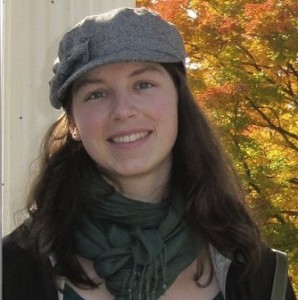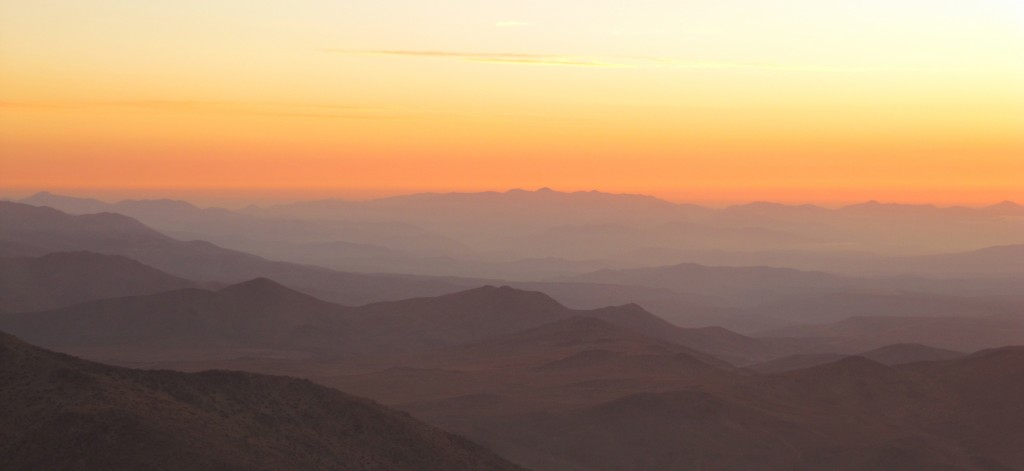Hello first graders! I’m excited to introduce you to our new scientist of the month Elisabeth Newton. When I was a kid, the first book I read that made me fall in love with science was all about astronomy, I even still have it! I loved space, and looking up at the stars at night. While my work has nothing to do with space, it is still one of my favorite topics – so lucky for us, Elisabeth studies space!
Erin: What type of scientist are you?
Elisabeth: I’m an astronomer, and I use telescopes to learn about small nearby stars, which are called red dwarfs. Astronomers study all kinds of things in space, from the explosion of stars, to asteroids in our solar system, to the formation of galaxies. Some astronomers are like me, and use telescopes to make observations. Other astronomers use computers to try to model what we see.
Erin: It takes a long time (or at least a lot of school) to become a scientist. What is one of your favorite memories from school or things that you learned in school?
Elisabeth: It does take a long time, and I’m still in school! (Thankfully, as a graduate student in astronomy, I actually get paid to go to school, which I think is a pretty good deal.) My favorite memory so far is using a telescope for the first time, which was during my first year of graduate school. I had never used a telescope before, and the first one I used was in Chile. It was so beautiful! The best part was at dawn, when I got to watch the telescope being shut down for the day while the sun rose over the mountains.
Erin: Where do you work, and what do you do on a typical day at work?
Elisabeth: A typical day for me is spent in my office. I analyze my data, I make plots, and I read about the science other people are doing. I also spend time talking to my fellow scientists and discussing ideas for new research, or a new result that’s just come out. But sometimes I get to go on very exciting trips! I’ve been to Chile and Hawaii to use telescopes located on the tops of mountains, and to Germany and Maui to attend conferences. In the past couple of years, I also have helped to teach classes and taken classes myself.
Erin: Why did you decide to become a scientist?
Elisabeth: This is a hard one! I loved physics in high school, and I thought it was really cool how equations could help us understand how the world works. In college, I did research on galaxies and learned that I liked the day to day parts of research in astronomy: trying to understand data, writing computer programs, and writing about my results. I also enjoy teaching and mentoring students, and that’s also a big part of being a good scientist.
Erin: What is your favorite thing about your job?
Elisabeth: I’m a graduate student right now and my main job right now is to do research and learn to be a good scientist, which is pretty cool. For me, the best part about being a scientist is getting to learn about the Universe, and just being in a place where new discoveries are made every day. My friends find planets orbiting other stars, model the sun, and work to understand how galaxies form.
Erin: What is something you’ve found about either being a scientist or the subject you study that most people don’t know?
Elisabeth: The closest star to the sun is called Proxima Centauri and it’s a red dwarf star, one of the type of stars that I study. In fact, red dwarfs are the most common type of star in our entire galaxy. But they are also really, really faint: not a single one is visible by eye in the night sky!
Erin: What are some of the things you like to do for fun?
Elisabeth: The main things I do for fun are rock climbing and playing board games. Recently, I’ve been learning how to make bread, applesauce and ice cream, so I’ve had a lot of fun in the kitchen over the past few months. I also like to do arts and crafts; my favorite thing is making earrings, but right now I am trying to learn how to sew.
What do you think first graders? I hope you enjoyed reading my interview with Elisabeth, and don’t forget if you have any questions you’d like to ask her, be sure to leave them in the comments. Grown ups – if you would like to learn more about Elisabeth, you can find her on twitter @EllieInSpace. I’m always taking volunteers for scientist of the month, so let me know if you’d like to participate!
The scientist of the month segment was inspired by the stories shared on twitter and tumblr from I Am Science.


Thank you Elizabeth for being our scientist of the month. We think Red Dwarf Stars are cool! Why are red dwarf stars called that? Are they red? Are they small?
What temperature are dwarf stars? Why are dwarf stars cooler than other stars?
Do red dwarf stars orbit like planets?
What are red dwarf stars made of? Thanks for answering our questions. We can’t wait to learn more about Red Dwarf Stars. Love 1P
I’m glad you all think they’re cool too!
You got it exactly: red dwarfs are called that because they are red and small! Their red color comes from the fact they are cool (about 3000 degrees! That’s hot for us, but cool for a star). Actually, our Sun is a dwarf star too. It’s hotter than a red dwarf (about 5500 degrees) and is yellow, as you can see!
A dwarf star is one that is on the main stage of its life, slowly burning fuel at its center. Eventually, it runs out of that fuel and enters a new stage of life. A star like our Sun will get a lot bigger and redder in this later stage and will be called a red giant.
Normal stars, like the Sun and red dwarfs, are made almost entirely of two elements: hydrogen and helium. Most red dwarf stars are not found in systems with other stars (“binary stars” are when two stars orbit each other). But, we do think that there are planets – possibly many, many planets – around red dwarfs!